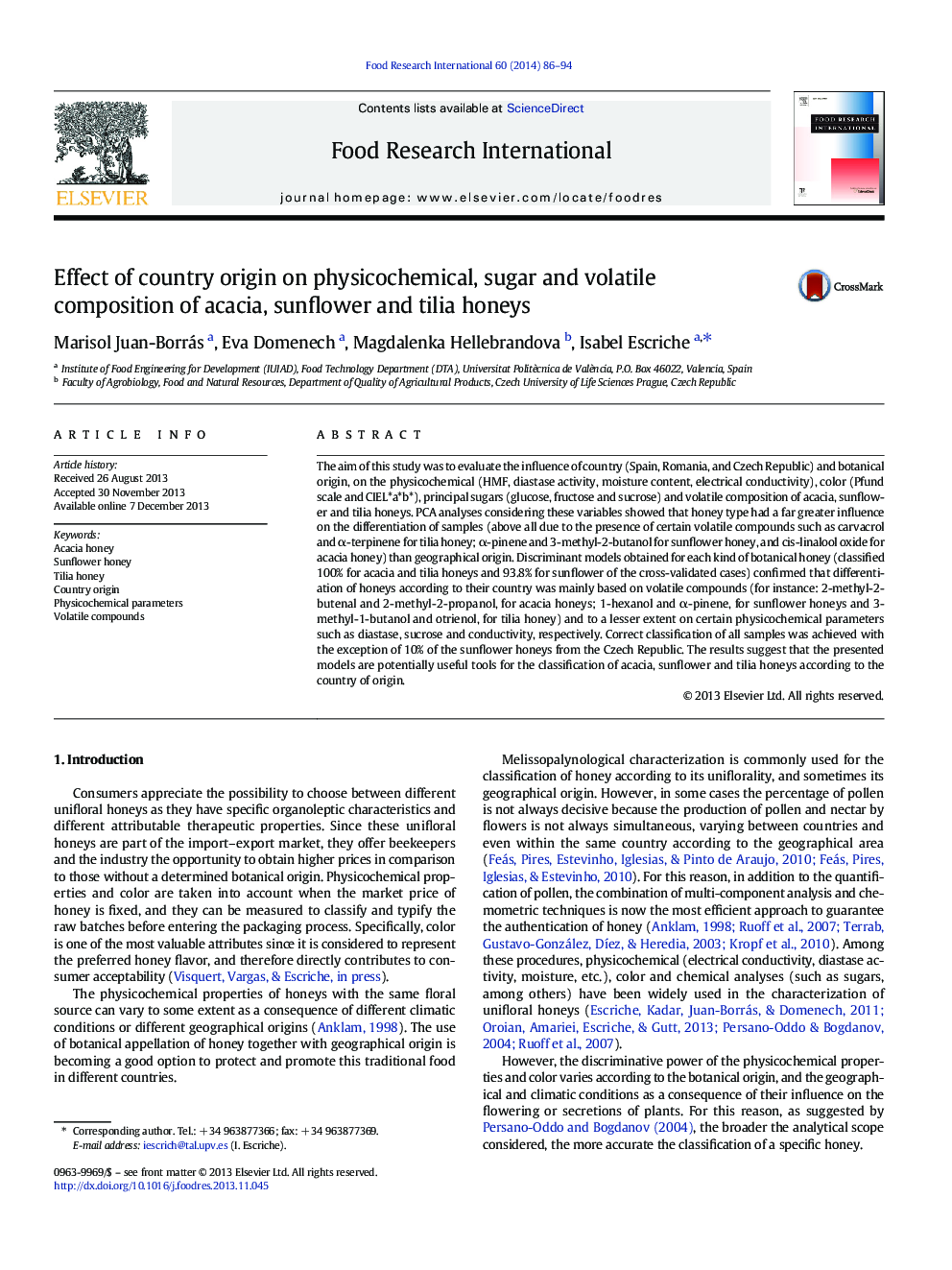| کد مقاله | کد نشریه | سال انتشار | مقاله انگلیسی | نسخه تمام متن |
|---|---|---|---|---|
| 6396474 | 1628484 | 2014 | 9 صفحه PDF | دانلود رایگان |
- Botanical origin differentiates honey samples better than the geographical origin.
- Differentiation of honeys according to country was mainly based on volatile compounds.
- All acacia and tilia honeys were correctly classified according to the country origin.
- 10% of sunflower honeys from the Czech Republic were wrongly classified.
The aim of this study was to evaluate the influence of country (Spain, Romania, and Czech Republic) and botanical origin, on the physicochemical (HMF, diastase activity, moisture content, electrical conductivity), color (Pfund scale and CIEL*a*b*), principal sugars (glucose, fructose and sucrose) and volatile composition of acacia, sunflower and tilia honeys. PCA analyses considering these variables showed that honey type had a far greater influence on the differentiation of samples (above all due to the presence of certain volatile compounds such as carvacrol and α-terpinene for tilia honey; α-pinene and 3-methyl-2-butanol for sunflower honey, and cis-linalool oxide for acacia honey) than geographical origin. Discriminant models obtained for each kind of botanical honey (classified 100% for acacia and tilia honeys and 93.8% for sunflower of the cross-validated cases) confirmed that differentiation of honeys according to their country was mainly based on volatile compounds (for instance: 2-methyl-2-butenal and 2-methyl-2-propanol, for acacia honeys; 1-hexanol and α-pinene, for sunflower honeys and 3-methyl-1-butanol and otrienol, for tilia honey) and to a lesser extent on certain physicochemical parameters such as diastase, sucrose and conductivity, respectively. Correct classification of all samples was achieved with the exception of 10% of the sunflower honeys from the Czech Republic. The results suggest that the presented models are potentially useful tools for the classification of acacia, sunflower and tilia honeys according to the country of origin.
Journal: Food Research International - Volume 60, June 2014, Pages 86-94
